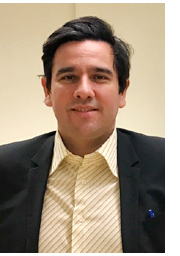 |  No half measures when it comes to investment No half measures when it comes to investment
Is there a “magic number” for the operator population in a given market: one that makes it possible to combine low prices and high investment? This has been a longstanding conundrum in Brussels, where former monopolies and the leading banks are lobbying for greater consolidation. With the Commission’s Communications Code seeking to review existing directives, this somewhat fruitless debate is about to be overtaken by otherwise important, substantive work on the type of regulation capable of galvanising investment in the networks of tomorrow, and achieving complete coverage across Europe.
France in the meantime is in the process of finding, if not the perfect equation, at least a practical dynamic. The arrival of a fourth mobile operator has proven very successful for consumers, and a major shake-up for its competitors and the sector as a whole. But recently published figures from Arcep reveal an encouraging trend of stabilisation in the sector. More importantly still, that investments are on an upwards swing. Now that a new Government and Parliament are poised to take over the reins, we must not forget the impact that the latest mergers and acquisitions have had on investment, jobs, etc. So, in France as well, it is time to put talk of consolidation on hold, and focus instead on the major issues and challenges the sector is facing. Mobile coverage, fixed ultrafast access, 5G… therein lies the challenge.
Sébastien Soriano, Chairman of Arcep, Chairman of BEREC

|  |
 |
Regulation in action
Definition of “fibre zone” status: Arcep wants to hear from you!
What is “fibre zone” status?
Accelerating the transition to optical fibre access is the raison d’être of the “fibre zone” status awarded to an area that requests it. This status, which is established by law, will concern geographical entities, such as municipalities, whose optical fibre network satisfies certain prerequisites for a mass migration from the legacy copper network to an optical fibre network. It is intended to benefit operators and local authorities alike. In addition to being positive for their image, it offers the benefit of lifting the obligation to install copper telephone lines in new buildings. Additional, notably price-related, incentives are also being examined.
What is Arcep’s role?
Arcep is responsible for proposing to the Government the system, terms and conditions for awarding the status, which it hopes will be clear and understandable to everyone, and so be conducive to its adoption. This is why Arcep plans on awarding the status of fibre zone only to those locations where rollouts are complete in the area in question: all of the households in the zone must be eligible to subscribe to an FttH service, or able to be connected within six months.
Arcep is currently holding a consultation on the topic with stakeholders, which will run until 24 May. Once the Ministerial order is adopted, it will Arcep’s job to award the new status to the zones that apply for it.
Find out more
Regulation in the service of smart regions (in French) |  |
 |
| On our radar | | Sharon White, Chief Executive of Ofcom “We can now expect better service from Openreach”. So said the Chief Executive of the British regulator, Sharon White, in a Radio 4 interview on 10 March, as Ofcom had just announced the structural separation of Openreach from British Telecom (BT). Openreach, which manages BT’s fixed network, will thus become a legally separate enterprise, belonging to the incumbent carrier, with its own board of directors, management structure and strategies. It has the obligation of serving all of its customers equally. British Telecom accepted all of the changes requested by Ofcom, notably the call to deploy superfast access across the UK. As a result, Ofcom will no longer have to impose these changes through regulation.
| 
|
|
|  | | News from around the world
India’s mobile market is thriving
India’s mobile market which, with more than a billion subscribers, is the second largest in the world after China, and has been going through some major changes in recent months. Changes ushered in by the arrival of Reliance Jio which has upset the balance of power. Thanks to very aggressively positioned mobile plans, Jio reached the symbolic threshold of 100 million subscribers in a matter of months, which set off a wave of mergers: Bharti with Telenor in February, Vodafone with Idea Cellular in late March. Here, it is worth remembering that there are around a dozen operators in India.
At the same time, some operators are going after the newcomer, and have filed a complaint with the Telecom Disputes Settlement and Appellate Tribunal (TDSAT) regarding the new plans. A TDSAT hearing is due to take place in early May 2017.
NB: Sébastien Soriano, the BEREC Chair in 2017, was in India in late March and met with the Chairman of the Indian regulator, TRAI – who himself had been in Paris a few weeks earlier – and with key Indian market players, as part of a BEREC fact-finding mission.
Sébastien Soriano’s interview with the Economic Times (Indian daily newspaper) |
| |
 | Arcep, telling it like it is
 The purpose of the public consultation that Arcep launched on 7 April was to propose a bottom-up model for a shared optical local loop network. Developed in-house over the past year and coded chiefly in JavaScript, this model simulates the layout, architecture and costs of a fibre access network deployed by a so-called “efficient” operator across the country. The purpose of the public consultation that Arcep launched on 7 April was to propose a bottom-up model for a shared optical local loop network. Developed in-house over the past year and coded chiefly in JavaScript, this model simulates the layout, architecture and costs of a fibre access network deployed by a so-called “efficient” operator across the country.
The goal? To obtain independent cost references from market players, and thereby minimise the “information asymmetries” that handicap the regulator. One first application will be to provide additional benchmark elements when setting copper pair unbundling prices for 2018-2020. The regulatory accounting cost model for the Orange copper network is currently the main source of reference, so the goal is to complete this information by evaluating the “replacement cost” of a network that would be deployed today, which makes it possible to incorporate the future benchmark infrastructure as the long-term marker. This work is part of the broader efforts that Arcep is devoting to providing economic stakeholders with greater clarity going forward.
Thanks to this consultation, Arcep hopes to finalise the choice of modelling and parameters needed to obtain an efficient model, and to determine the system for using it. For the sake of transparency, it is publishing a functional and technical description as well as all of the source code developed by Arcep teams.
The consultation (in French)
Source code files and parameters
Hubert Virlet, Michel Rao and Adrien Laroche
Members of the “Models and Pricing” Unit |  |
 |
Mark your calendar 
Press conference – Arcep unveils telecom market figures for 2016
On 19 May, Arcep will be publishing its scorecard on telecom markets in France in 2016. Sébastien Soriano and Arcep Executive Board members will present core market data to members of press: fixed and mobile networks, investment, operators’ revenue, jobs, etc.
That same day, a statistical survey will be published on the overseas departments and territories, along with fixed and mobile price indexes.
Open to the press / By invitation |  |
 | 30 May in Paris
Presentation of the first “Annual report on the state of the internet in France”
On 30 May, Arcep will be publishing its first annual report on the state of the internet in France. In it you will find Arcep’s approach to fixed access and service quality, current trends in the interconnection market, the status of the French market’s transition to IPv6 and a state of the art on Arcep’s implementation of European regulation that guarantees net neutrality. The report will be presented to the media on 30 May in Paris. Open to the press / By invitation
8 and 9 May in Abidjan
Fratel Seminar
The network of French-speaking telecommunications regulators will be meeting for its 14th seminar on 8 and 9 May of this year in Abidjan. It will explore a topic that is very much in the news: “How can regulation promote an open internet”?
Find out more
Until 7 January 2018
Terra Data – Our lives in the digital era
The Cité des sciences et de l’industrie science centre in Paris is holding an exhibit on Big data: these masses of data that computers, phones and connected objects produce every day. The exhibition is divided into four sections, to answer four questions: Data: what are they? What do we do with them? What difference do they make? Where do we go from here?
Find out more
| |
  |
|  |
|

